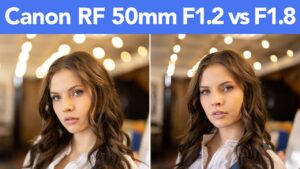
Night Photography
Capturing the magic of a wedding night can be challenging but rewarding. Here are the top six camera settings to consider for night photography at a wedding:
1 Aperture (f-stop) night Photography
Aperture (f-stop): Use a wide aperture (e.g., f/1.8 to f/2.8) to allow more light into the camera. This also creates a beautiful shallow depth of field, helping to isolate subjects against blurred backgrounds.



2 ISO Night photography
ISO: Set a higher ISO (e.g., 1600 to 3200) to compensate for low light. Be mindful of noise; test your camera’s performance at different ISO levels to find a balance between brightness and image quality.




3 Shutter Speed:
Shutter Speed: Use a slower shutter speed (e.g., 1/60 to 1/125 seconds) to gather enough light. If you’re shooting handheld, try to keep it above 1/60 seconds to avoid motion blur, or use image stabilization if available.


4 White Balance: Night Photography
White Balance: Adjust your white balance to match the ambient lighting. If using mixed lighting (e.g., candlelight and flash), consider setting it to a custom value or using the Kelvin scale for more accurate colors.



5 Focus Mode: Night Photography
Focus Mode: Use single-point autofocus for precise focusing on key subjects, especially in low light where autofocus may struggle. Manual focus can also be beneficial for creative shots.




6 Metering Mode: Night photography
Metering Mode: Consider using spot metering to ensure the exposure is accurate on your main subjects, particularly in tricky lighting scenarios. This helps prevent underexposed or overexposed areas.




Thank You for Visiting!
We appreciate you taking the time to explore our site. Your interest means a lot to us! If you have any questions or need further information, don’t hesitate to reach out. We look forward to connecting with you again soon!
discretion
Photography is an art form that captures moments in time, freezing them into images that convey stories, emotions, and messages. It blends technical skill with creative vision, relying on both equipment and the photographer’s eye to create powerful visuals. At its core, photography is the practice of capturing light, and with the advent of modern technology, it has expanded into a wide range of genres and styles, from documentary and fine art to fashion and landscape photography.
A photographer’s work begins with an idea or vision. They may be inspired by a scene, a person, or even an abstract concept, and they use the camera as a tool to translate that inspiration into a visual narrative. The choice of subject is crucial—whether it’s a towering mountain range bathed in golden light, a quiet portrait that reveals the personality of the sitter, or a gritty street scene capturing urban life. Composition plays a key role in the effectiveness of the image. It refers to how elements within the frame are arranged and balanced to guide the viewer’s eye and emphasize the main focus of the photo. Techniques such as the rule of thirds, leading lines,
A photographer’s work begins with an idea or vision. They may be inspired by a scene, a person, or even an abstract concept, and they use the camera as a tool to translate that inspiration into a visual narrative. The choice of subject is crucial—whether it’s a towering mountain range bathed in golden light, a quiet portrait that reveals the personality of the sitter, or a gritty street scene capturing urban life. Composition plays a key role in the effectiveness of the image. It refers to how elements within the frame are arranged and balanced to guide the viewer’s eye and emphasize the main focus of the photo. Techniques such as the rule of thirds, leading lines, symmetry, and framing help photographers create a harmonious and visually pleasing composition.
Lighting is another essential component of photography. The way light interacts with the subject can dramatically alter the mood and feel of the image. Natural light, such as sunlight, provides a soft, organic look, while artificial light, such as studio lighting, allows for complete control over brightness, shadows, and highlights. Mastering light—both in its natural and artificial forms—can take years of practice and is what often separates amateur photographers from professionals.
In addition to light and composition, camera settings like aperture, shutter speed, and ISO also affect the outcome of a photograph. Aperture controls the amount of light entering the lens and affects the depth of field—whether the background is blurred (shallow depth of field) or everything is in focus (deep depth of field). Shutter
thanks


